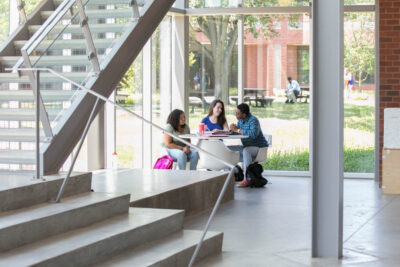What 126 presidents learned from Slack about the future of work
The pandemic has shaken the world of work and learning—but which pandemic practices will we preserve in the future? This was one of the key themes 126 college and university presidents discussed during our Presidential Experience Lab, EAB’s signature event for college and university presidents to take inspiration from out-of-industry exemplars to consider thought-provoking concepts, lessons and trends to help shape their leadership efforts and institutional strategy. For this year’s Presidential Experience Lab, we partnered with Future Forum by Slack, a consortium founded to enable leaders to reimagine work through data and dialogue.
In the wake of COVID-19, a dramatic reconfiguration of work patterns is underway: 55% of employers expect most staff to be remote one day or more weekly—even post-pandemic. EAB’s Chief Partner Officer Sally Amoruso shared, “US employers expect the number of workdays delivered from home to triple post-pandemic. Tele-work is here to stay.” But what does this mean for higher education, where many institutions have traditionally relied on a thriving campus culture? Below are a few takeaways from the event and questions to consider as you plan for your institution’s post-pandemic future.
Flexible class offerings and work environments may increase faculty and staff happiness and engagement
“The future campus is not fully on-site, or fully remote—it’s in between,” said Amoruso. 75% of the presidents at the Presidential Experience Lab said that they personally would work from home less than 25% of workdays post-pandemic. Yet Brian Elliot, VP of Future Forum by Slack, shared that 83% of workers do not want to go back to a pre-pandemic work model. The shift to remote work has generated an opportunity for massive change, enabling employees to save money, get back time spent on commutes, and allow for a better work-life balance.
-
83%
percentage of workers who do not want to return to a pre-pandemic work model
Campus leaders now must strike a balance between meeting student, staff, and faculty needs and ensuring institutional stability. But as higher ed moves forward, leaders should approach our post-pandemic reality with a “best of both worlds” mindset. For colleges and universities as employers, this means optimizing work modality, expanding employee choice, enabling hybrid communication and interaction, and enhancing agility in the face of change.
Based on the findings about the positive outcomes of remote work, we asked the presidents at the event to consider these questions as they evaluated their own campus’s remote work plans:
- Were your employees really coming into the office every day? Perhaps enrollment or advancement roles spent a significant time on the road pre-pandemic. Before making decisions about remote work policies, consider the differences that existed pre-pandemic between departments and roles.
- Will allowing employees in back-office roles to continue to work remotely, at least part time, negatively impact your students’ perceptions of campus feel? Or did your students have limited engagement with these employees already?
Your in-person, pre-pandemic campus culture may not have been as inclusive as you thought
Elliot argued that a hybrid culture levels the playing field. Future Forum’s research indicates that remote work has improved Black employees’ sense of belonging within their organizations, made social gatherings more accessible for working parents, and has allowed for more strategic hiring practices. Within higher education, Brandon Busteed, President of Kaplan University Partnerships, found through a recent survey that students of color are more comfortable contributing their opinions to class discussions in an online forum and prefer virtual internships more than white students. However, some presidents at the event shared their concerns about the potential negative impact on campus if they were to adopt a hybrid post-pandemic work model.
We challenged the presidents in the experience lab to consider these questions:
Questions about how to prepare students for a digital economy prompted attendees to dig deeper on how higher ed is—and isn’t—preparing students for the world of work
During a panel discussion, Ruth Watkins, University of Utah president and incoming president of Strada Impact, noted that presidents across institutions, from the Ivy League to community colleges, agree that career services are “stuck in the 1980s.” She posited that institutions need to think about career preparation before day one, not just Junior or Senior year.
The panelists also discussed how obtaining relevant career preparation opportunities has historically been a privilege and not as accessible as it should be. Busteed spoke about how colleges and universities should create dedicated funds to support students taking unpaid internships who could otherwise not afford the opportunity. Some attendees mentioned that they’ve already run fundraising campaigns around this concept and achieved great success. Yet, this is not enough—institutions must do more to learn from out-of-industry disruptors, like Grow with Google, who are providing work experience for students that align with what they’re learning in the classroom.
As you assess how your institution is preparing students for the world of work, ask these questions:
The past year has been undeniably tumultuous for higher ed, with an estimated revenue loss of $120 Billion, according to the American Council on Education. However, amid the hardship, colleges and universities have discovered untapped potential in the remote learning and work world. While there is no “one size fits all” model for the correct blend between in-person and remote activity, leaders must forge new paths and invest in new modes of operation to best prepare their students to thrive while staying true to their institution’s missions.
More Blogs

The real demographic crisis isn't national—it's regional

Beyond the echo chamber
